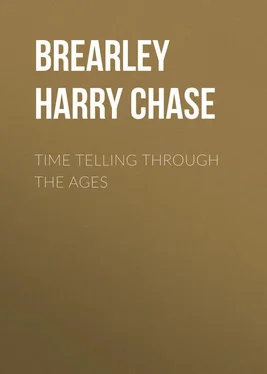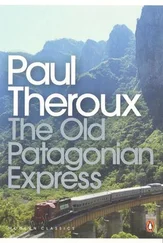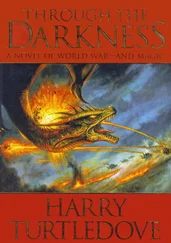Harry Brearley - Time Telling through the Ages
Здесь есть возможность читать онлайн «Harry Brearley - Time Telling through the Ages» — ознакомительный отрывок электронной книги совершенно бесплатно, а после прочтения отрывка купить полную версию. В некоторых случаях можно слушать аудио, скачать через торрент в формате fb2 и присутствует краткое содержание. Жанр: foreign_antique, foreign_prose, на английском языке. Описание произведения, (предисловие) а так же отзывы посетителей доступны на портале библиотеки ЛибКат.
- Название:Time Telling through the Ages
- Автор:
- Жанр:
- Год:неизвестен
- ISBN:нет данных
- Рейтинг книги:4 / 5. Голосов: 1
-
Избранное:Добавить в избранное
- Отзывы:
-
Ваша оценка:
- 80
- 1
- 2
- 3
- 4
- 5
Time Telling through the Ages: краткое содержание, описание и аннотация
Предлагаем к чтению аннотацию, описание, краткое содержание или предисловие (зависит от того, что написал сам автор книги «Time Telling through the Ages»). Если вы не нашли необходимую информацию о книге — напишите в комментариях, мы постараемся отыскать её.
Time Telling through the Ages — читать онлайн ознакомительный отрывок
Ниже представлен текст книги, разбитый по страницам. Система сохранения места последней прочитанной страницы, позволяет с удобством читать онлайн бесплатно книгу «Time Telling through the Ages», без необходимости каждый раз заново искать на чём Вы остановились. Поставьте закладку, и сможете в любой момент перейти на страницу, на которой закончили чтение.
Интервал:
Закладка:
The question arises, therefore, why this newcomer in the field of timekeeping, should have begun to displace the earlier devices. The clock was not yet a better timepiece than the sun-dial; why did it grow more common? Well, for one thing, people like novelties. For another, people loved their churches and lived by the chimes of distant bells; and the clock was by far the most practical striking device, whatever might be its faults in keeping time. But, what was most important of all, it was a machine, susceptible of infinite improvement and offering a field for endless ingenuity. It appealed to that inborn mechanical instinct by means of which mankind has wrought his mastery over the world.
We have seen how de Vick's clock contained, as it were, the germ of all our clocks. And, moreover, the medieval regarded machinery with profoundest awe. It is the unknown which awakes imagination. We wonder at the cathedrals of his day, but the medieval knew about cathedrals; he built them. Considering their comparatively cruder tools, lack of modern hoisting machinery, and so forth, their architectural and building abilities exceeded even those of to-day. On the other hand, a locomotive or a modern watch, such as we glance at without special notice, would have appeared to him the product of sheer sorcery, too wonderful to be the work of human hands.
The Middle Ages could not much improve their clock without some radical invention; and such a mechanical type of invention was yet the province of but few minds. The typical craftsman could merely make the clock more convenient, more decorative, and more wonderful. To this work, he and his fellows addressed themselves with all of their patient skill and their endless ingenuity for ornamentation.
They made clocks for their churches and public buildings, and elaborated them with intricate mechanical devices. The old "Jacks" that struck the bells were only a beginning. They made clocks for their kings and wealthy nobles, adorning them with all the richness that an artist could design and a skilful jeweler execute. They made clocks even for ordinary domestic use so quaint in design and so clever in workmanship that we exhibit them to-day in our museums. One difficulty in determining the date of the first invention is that long before the days of de Vick and Lightfoot, machines were made to show the day of the week and month and to imitate the movements of the stars; and the first horological records may refer to clock-works of this kind.
The famous clock of Strassburg Cathedral shows the extreme to which the medieval craftsman carried this kind of ingenuity. It was originally put up in 1352 and has been twice rebuilt, each time with greater elaboration. It is three stories high and stands against the wall somewhat in the shape of a great altar with three towers. Among its movements are a celestial globe showing the positions of the sun, moon, and stars, a perpetual calendar, a device for predicting eclipses and a procession of figures representing the pagan gods from whom the days of the week are named. There are devices for showing the age and phases of the moon and other astronomical events. The hours are struck by a succession of automatic figures, and at the stroke of noon a cock, perched upon one of the towers, flaps his wings, ruffles his neck, and crows three times. This clock still remains, having last been rebuilt in the four years 1838 to 1842. But its chief interest is that of a mechanical curiosity. It keeps no better time than a common alarm-clock, nor ever did. And in beauty as well as usefulness, it has been surpassed many times by later and simpler structures.
For the first really important improvement in clock making we must pass to the latter end of the sixteenth century. The Italian Renaissance with its great impulse to art and science has come and gone, and the march of events has brought us well into the modern world. America had been discovered a century and is beginning to be colonized. Spain is trying to found a world empire upon blood and gold and the tortures of the Inquisition. England is at the height of the great Elizabethan period. It is the time of Drake and Shakespeare and Sir Walter Raleigh.
At this period of intellectual awakening, a remarkable young man steps upon the scene. In 1564, the year in which the wonderful Englishman, Shakespeare, first saw the light of day, the scarcely less wonderful Italian, Galileo, was born in Pisa. He was gifted with keen eyes and a swift, logical mind, which left its impress upon so many subjects of human thought and speculation that we are tempted to stop as with Archimedes and trace his history. But, one single incident must suffice.
In 1581, this youth of seventeen stood in the cathedral of Pisa. Close at hand, a lamp suspended by a long chain swung lazily in the air currents. There was nothing unusual in such a sight. Millions of other eyes had seen other suspended objects going through exactly this motion and had not given the sight a second thought. At this moment, however, a great discovery of far-reaching application – one which was to revolutionize clock construction – hung waiting in the air. Young Galileo took notice.
The lamp swung to and fro, to and fro. Sometimes it moved but slightly. Again, as a stronger breeze blew through the great drafty structure, it swung in a considerable arc, but always – and this was the point which impressed itself upon the Italian lad – the swing was accomplished in exactly the same time. When it moved a short distance, it moved slowly; the farther it moved, the faster became the motion; in its arc it moved more swiftly, accomplishing the long swing in the same time as it did the short one. In order to make sure of this fact, Galileo is said to have timed the swinging lamp by counting the beating of his pulse.
Thus was discovered the principle of the pendulum and its "isochronism." By "isochronism" we mean inequal arcs in equal time . In other words, any swinging body, such as a pendulum, is said to be "isochronous" when it describes long or short arcs in equal lengths of time. This also applies to a balance-wheel, and hair-spring. And herein lies a remarkable fact – this epoch-making discovery was after all but a rediscovery. The isochronism of a swinging body was known in Babylon thousands of years before, although the Babylonians, of course, could not explain it. Lacking in application, it had passed from the minds of men, and it remained for Galileo to observe the long-forgotten fact and to work out its mechanical application. He did not himself apply this principle to clock-making, although some fifty years later, toward the end of his life, he did suggest such an application.
The first pendulum clocks were probably made about 1665, by Christian Huyghens, the celebrated Dutch astronomer and mathematician who discovered the rings of Saturn; and by the English inventor, Doctor Robert Hooke. The invention is claimed for several other men in England and abroad at about the same time; but hardly upon sufficient authority.
From that time on, the important improvements of clockwork were chiefly made in two directions – those of the mechanical perfection of the escapement and the compensation for changes of temperature.
There is a little world of invention and discovery behind the face of the clock which beats so steadily on your mantel. Look within if you will, and see the compact mechanism with its toothed gears, its coiled spring, or its swinging pendulum, in which the motion of the cathedral lamp is harnessed for your service, – nothing in that grouping has merely happened so. You may or may not understand all the action of its parts, or the technical names of them; but each feature in the structure has been the result of study and experiment, as when Huyghens hung the pendulum from a separate point and connected it with a forked crank astride the pendulum shaft. You can see that forked crank to this day, if you care to look; it was the product of good Dutch brains.
Читать дальшеИнтервал:
Закладка:
Похожие книги на «Time Telling through the Ages»
Представляем Вашему вниманию похожие книги на «Time Telling through the Ages» списком для выбора. Мы отобрали схожую по названию и смыслу литературу в надежде предоставить читателям больше вариантов отыскать новые, интересные, ещё непрочитанные произведения.
Обсуждение, отзывы о книге «Time Telling through the Ages» и просто собственные мнения читателей. Оставьте ваши комментарии, напишите, что Вы думаете о произведении, его смысле или главных героях. Укажите что конкретно понравилось, а что нет, и почему Вы так считаете.












